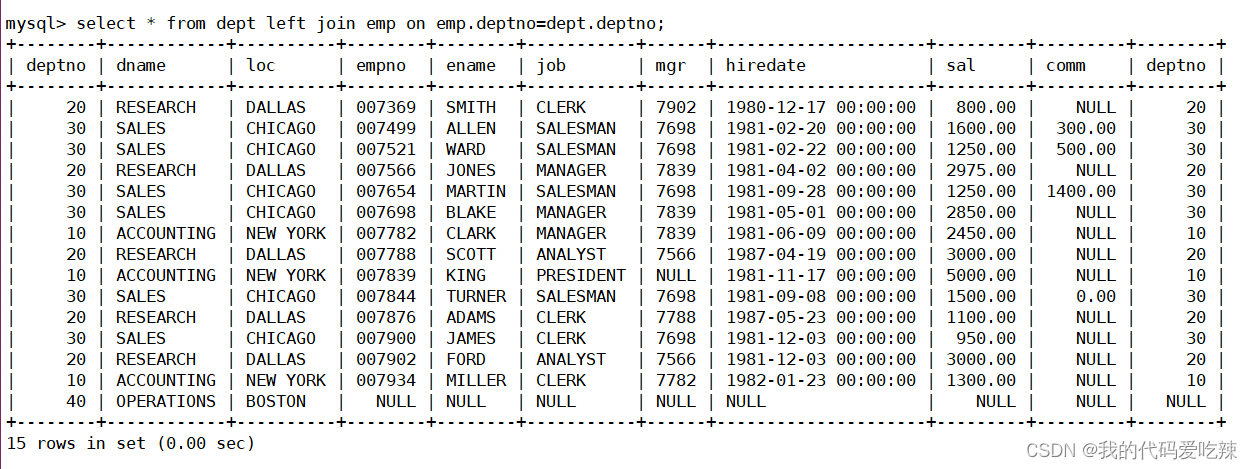Digital twins – a step towards a digital enterprise
AnyLogic是唯一一个支持创建模拟模型的方法的模拟建模工具:面向过程(离散事件)、系统动态和代理,以及它们的任何组合。AnyLogic提供的建模语言的独特性、灵活性和强大性使您能够以任何级别的细节考虑建模系统的任何方面。AnyLogic的图形界面、工具和库允许您快速创建模型,用于从生产建模、物流、业务流程到公司和市场发展的战略模型等广泛任务。
Digital transformation refers to the integration of digital technologies into various aspects of an organization, fundamentally changing how it operates and delivers value to its customers.
A digital enterprise is the outcome of a successful digital transformation. It is an organization that has fully embraced digital technologies, processes, and culture to optimize its operations, deliver value to customers, and maintain a competitive edge in the market.
An integral part of digital transformation and eventually becoming a digital enterprise is integrating digital twin technology with a company’s operational workflows.
Simulation-based digital twins: how they work
Although there are many definitions of digital twins, here we are focusing on simulation-based digital twins. These are prospecting dynamic models that initialize themselves based on the current state of the real system and can explore future scenarios through simulations.
Simulation-based digital twins are created by integrating near-real-time data into a simulated embodiment, be it a factory, warehouse, or anything else. By keeping the state of the simulation model in sync with its real-world counterpart, digital twins enable organizations to monitor, analyze, and optimize the operation of their assets in a risk-free environment.
Aside from operation optimization, digital twins provide a virtual playground for exploring possible future scenarios. They help mitigate financial and operational risks and test the effect of proposed changes before implementing them in the physical world.
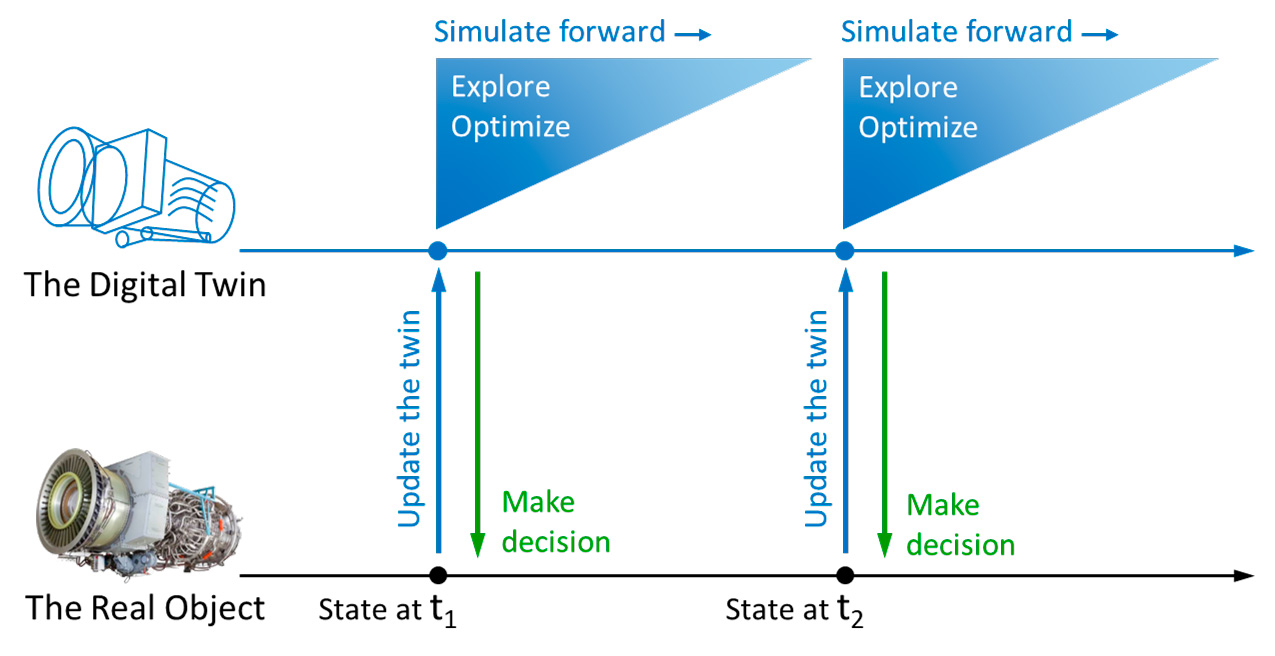
How a digital twin works
A digital twin is triggered at specific times and initialized based on the real-time data from the physical system. After the initialization, various experiments (Monte-Carlo, Optimization, Parameter Variation, etc.) are carried out to explore possible future scenarios, and their output is used to make informed decisions in the real world through human operators or automated systems.
Now that we’ve clarified what we mean by a simulation-based digital twin, let’s see how this helps with more complicated business cases and ultimately enables you to build an Enterprise Simulation.
Enterprise Simulation – a unique approach to the next-level digital transformation
Enterprise Simulation is a set of deployed (and maybe interconnected) simulation-based digital twins that are likely to be used at the operational level and are accessible to a large number of stakeholders across the organization.
The set may comprise many (possibly heterogeneous) simulation models representing distributed business units. The models, however, share a common business application.
For example, in a restaurant chain, each restaurant branch has a different layout, menu, and set of customers with unique order patterns, but they all use similar equipment, procedures, and an overall business model – and so would a set of digital twins of such businesses.
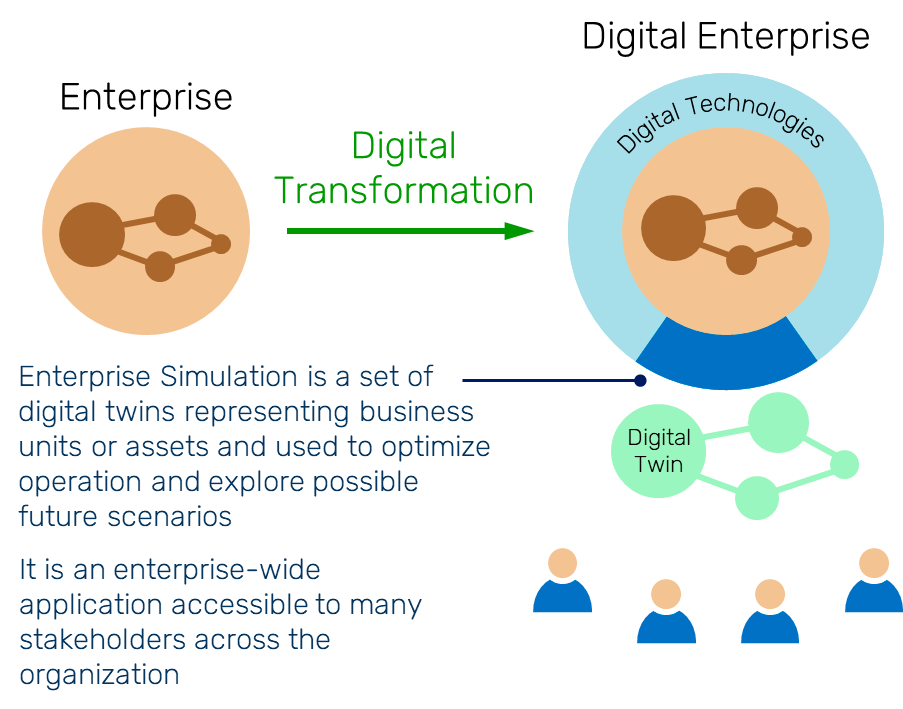
A company undergoes digital transformation to become a digital enterprise
with multiple digital twins as one integrated system – Enterprise Simulation
Technically, you can view Enterprise Simulation as an organization-wide application with a web interface deployed on servers or a corporate cloud with multiple users and access rights controlled by an administrator.
In the simplest case, there can be a digital twin of just one unit:
- one warehouse,
- one fulfillment center, or
- one restaurant.
This is what you would typically start with. Having successfully developed, deployed, and proven the operational usefulness of the first twin, you can expand that technology to other units or other locations, eventually creating the Enterprise Simulation.
Enterprise Simulation significantly impacts the lifecycle of simulation models
A traditional simulation lifecycle
A simulation model life cycle has two main phases.
- The “Creation” phase is an iterative process that includes conceptual modeling, logic coding, data integration, debugging, verification, and validation.
- The “Use” phase includes parameterizing and running the simulation, performing experiments of different types, and then analyzing and using the outputs.
Traditional simulations typically stay at the strategic or tactical level and are rarely designed to function as operational decision support systems. These “old-school” simulation models spend most of their lifecycle time in the “Creation” phase. They are briefly in the “Use” phase – just long enough to run some experiments and produce results to be included in the reports and presented to management.
A simulation-based digital twin lifecycle
The concept of Digital Enterprise, which is aimed at providing monitoring, planning, and forecasting tools, changes that paradigm. Digital twins, an essential part of the Digital Enterprise, are simulation models used at an operational or, less often, tactical level. This shift is a natural progression and an integral part of broader digital transformation initiatives.
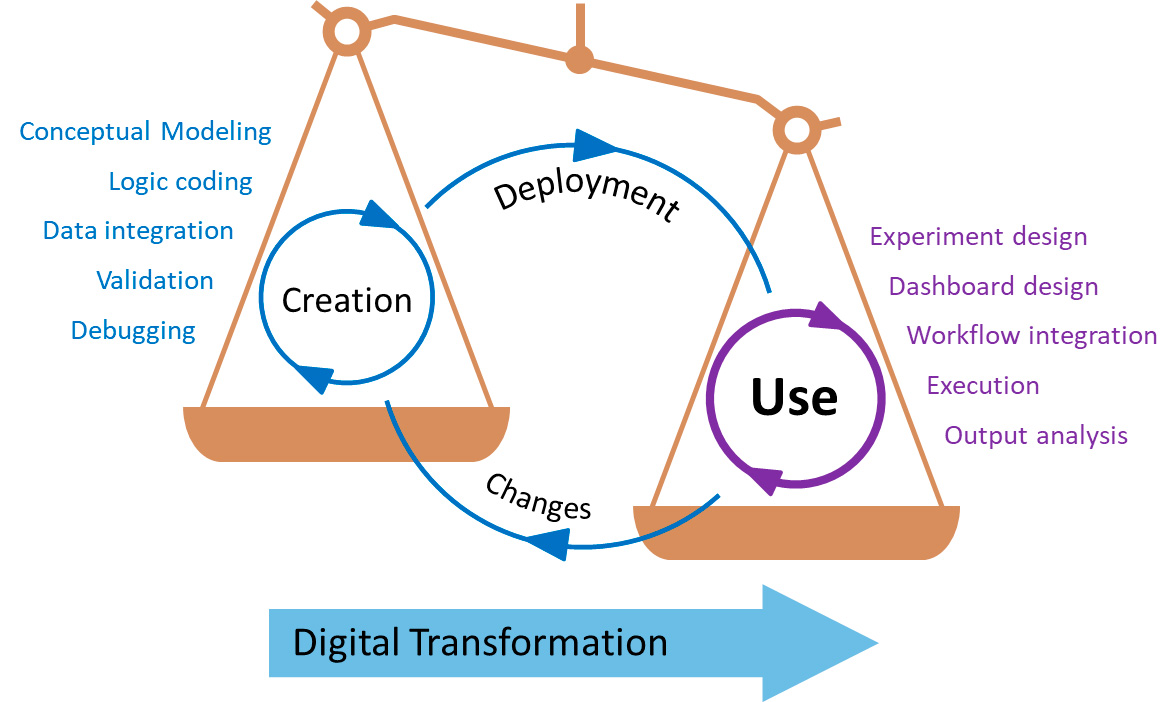
Impact of digital transformation on the simulation lifecycle – shifting it to the “Use” phase
Differences between conventional simulation models and digital twin models
Mainly, traditional simulation models work on imported past data and are run on a developer’s computer or laptop. In contrast, simulation-based digital twins have access to near-real-time data from the physical system and run on the cloud or on the company’s own servers. For more, see the table below:
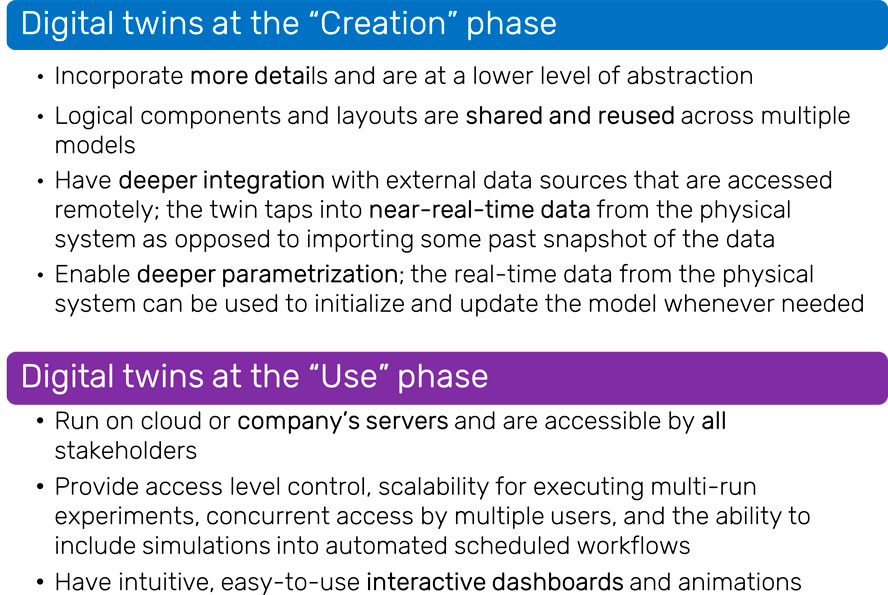
Digital twin “Creation” and “Use” phases as opposed to a traditional simulation lifecycle
AnyLogic ecosystem – all you need for building Enterprise Simulation
At the AnyLogic Company, we have strategically developed and architected an ecosystem consisting of AnyLogic model development software and AnyLogic Cloud, for Enterprise Simulation. It’s the singular comprehensive solution that addresses both the “Creation” and “Use” phases of digital twins.
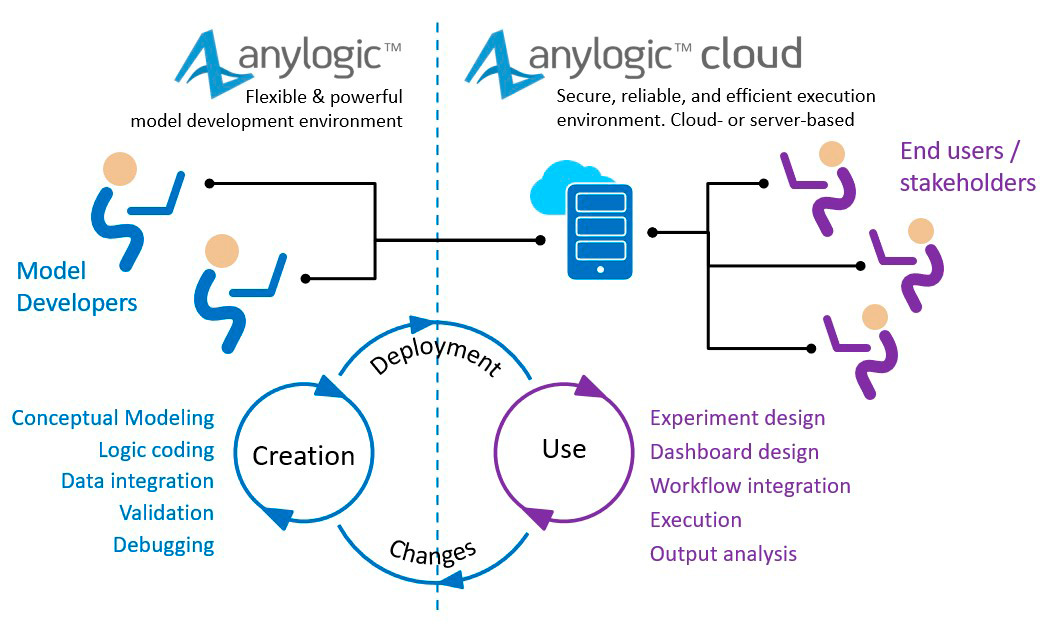
AnyLogic simulation modeling software and AnyLogic Cloud for end-to-end Enterprise Simulation
AnyLogic model development software for the “Creation” phase
The original philosophy behind AnyLogic modeling languages and the AnyLogic model development environment was to push the boundaries in simulation methodologies, data connectivity, and interoperability with external tools and methods.
AnyLogic has become synonymous with scalability and extensibility in the simulation market. This is particularly important for operational-level modeling. Here’s what AnyLogic has to offer:
1. Multimethod approach to simulate any business
Operational models are typically complex, low-abstraction models with numerous detailed components. Having the freedom to use all three modeling methods within the modular object-oriented environment increases your chances of success in handling complexity and creating digital twins with “just enough” details in structure and behavior to handle the problem.
2. API within an AnyLogic model
All components of an AnyLogic model are fully covered with the API and contain “extension points” to access external APIs, databases, files, libraries, optimization solutions, and heuristics from anywhere in the model. This enables the sound integration of digital twins with streams of knowledge about the system.
3. Simulation and AI
AnyLogic pioneered the interoperability of simulation and AI, such as embedding trained ML models into simulations. This is a crucial factor in representing hybrid systems of the future, where AI plays a significant role in system behavior.
4. Sharable libraries of reuseable custom components
The ability to create sharable libraries of reuseable custom components (fully supported in AnyLogic) is vital in Enterprise Simulation, where creating hundreds of simulation models with significant similarities is a frequent case. This allows a few advanced modelers to focus on creating the foundational elements with core logic, while other modelers can fine-tune them to replicate the operations of particular business units.
AnyLogic Cloud platform for the “Use” phase
Having been acutely aware of the limitations associated with running simulation models in local environments, especially when the models are run-on-demand digital twins, the AnyLogic development team introduced a forward-looking product, AnyLogic Cloud.
AnyLogic Cloud stands as a real solution for the seamless deployment and intense enterprise-wide consumption of simulation models. AnyLogic Cloud can be installed on a company’s server or on a private cloud and scales from one to an unlimited number of servers.
See how you can benefit from AnyLogic Cloud:
1. Easily upload simulation models
The process of uploading and deploying an existing AnyLogic model from the model development environment to AnyLogic Cloud is done in just a few clicks, without requiring a single line of code.
2. Manage user access to the digital twins
The administrator’s interface and support for Active Directory and LDAP enable the IT team to easily manage end users and their access to the digital twins. This includes developer-level access needed for model updates and maintenance as well as user-level access for analysts and managers.
3. Use the API to embed simulations into operational workflows
In addition to the model API, AnyLogic Cloud has its own API in four different languages aimed at embedding simulations into operational workflows.
Use cases range from parameterizing digital twins, running experiments, streaming outputs (in text, Excel, JSON, and other forms), and integrating the simulation frontend directly into corporate BI interfaces. The latter is possible because AnyLogic models have a browser-based interactive frontend with 2D and 3D animation capable of running remotely from the server where the model is being executed.
4. Automate the digital twin’s trigger points
Going forward, you can leverage Large Language Models (LLMs) to automate trigger points for AnyLogic Cloud-based digital twins, interpret simulation feedback, and suggest interventions for the real system.
How to start with Enterprise Simulation
Within our AnyLogic software ecosystem, the concept of a digital twin – and, even wider, the Enterprise Simulation – that provides live feedback to a control tower is no longer just a conceptual vision; it is becoming a reality.
If you’re on the digital transformation journey and would like to know more about Enterprise Simulation, get in touch. Our experts will describe how it can be applied to your business and how to set up the tools you will need for building Enterprise Simulation.




